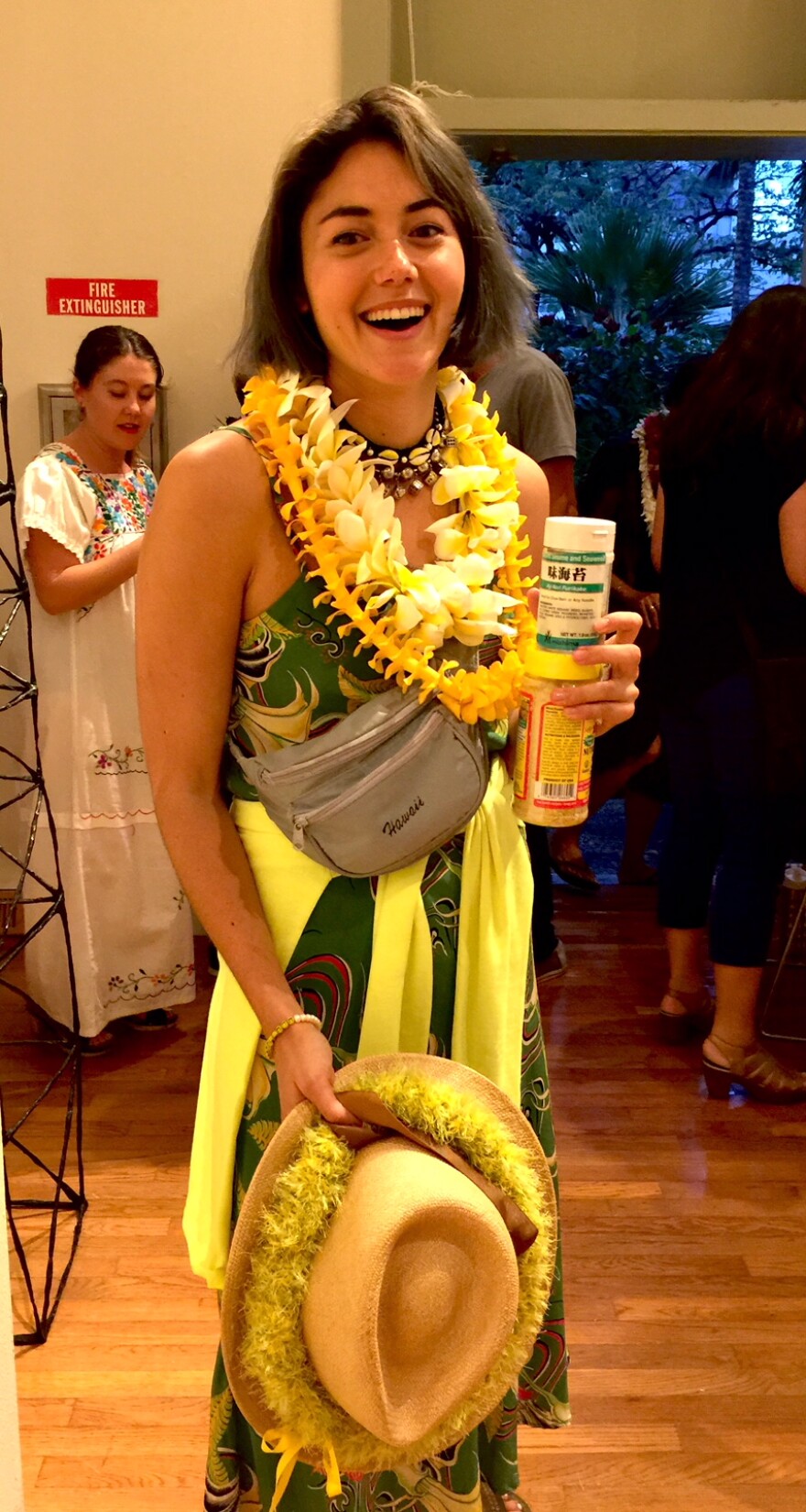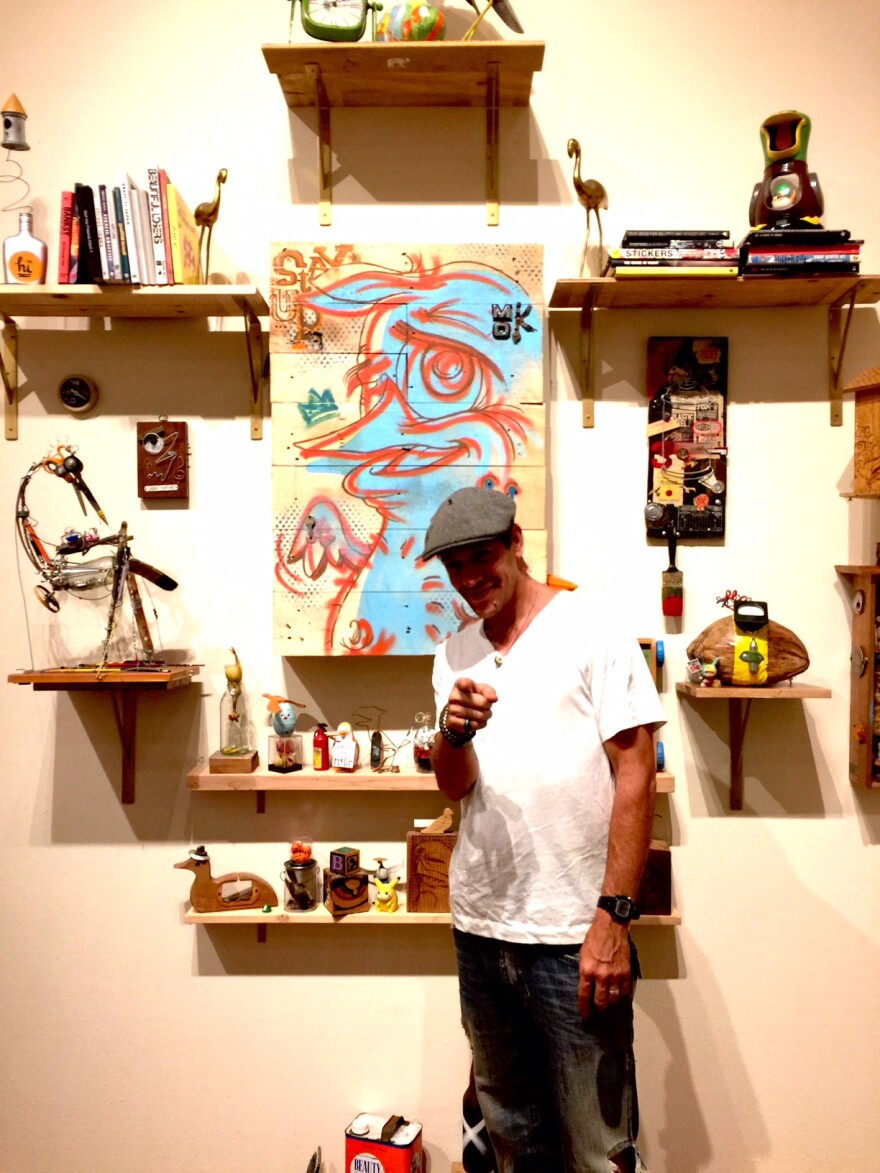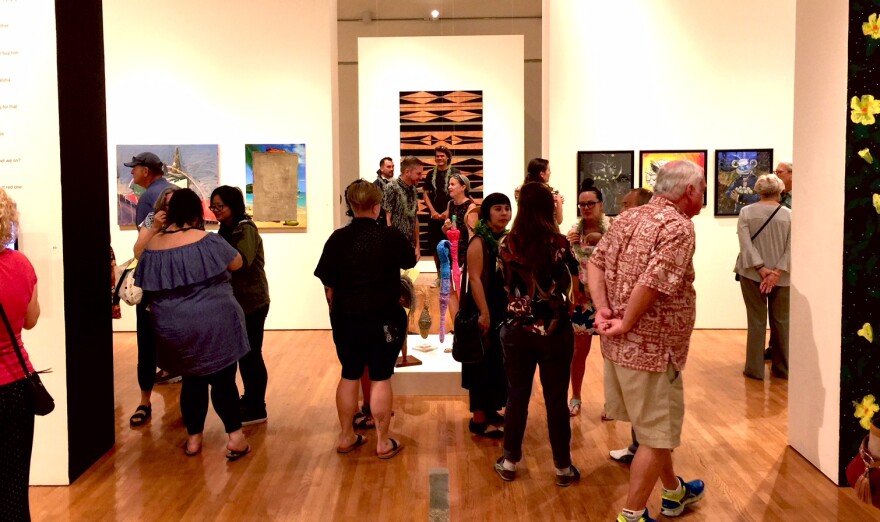Contact Hawai’i is proving to be Honolulu’s most intellectually and visually stimulating annual art exhibition. The 2018 show opened with multiple installations in Waikiki and continues at the Honolulu Museum of Art School. HPR’s Noe Tanigawa reports the jurors’ combined perspectives yielded a show with energy and insight.

Contact Hawai’i continues through April 21st 2018 at the Honolulu Museum of Art School. Experience Contact Zone at the Surfjack: Reimagining Waikiki, tonight and tomorrow, 4/17-18 2018, from 6-10 pm.
Experience a unique Contact Hawai’i 2018 event:
Friday, April 20, 8pm • 9pm • 10pm
? Luku Wale ?: Mark Hamasaki + Kapulani Landgraf
One-night Contact Zone projection installation. Ward Avenue side of the Blaisdell Concert Hall. Bring a mat or beach chair to view a 20-by-40-foot projection program of photographs of the construction of the H3

The co-curator of Contact Hawaii 2018, Michael Rooks, was a curator of contemporary art in Honolulu from 2003 to 2008, first at The Contemporary, then at the Honolulu Academy of Arts. He joined the High Museum of Art as Wieland Family Curator of Modern and Contemporary Art in January 2010, but has retained ties with the Hawai’i art community.
Rooks says, when he left Hawaii, artists were still pretty much painters, or sculptors, or printers, but now,
Rooks: I see a lot of artists who are really very open and comfortable working across media, even performance, or new media, which is very healthy, I think it’s a terrific sign.
It shows Hawaii artists are in touch with the world. Like Keola Rapozo, co-founder and creative director of Fitted Hawai'i, who devours Podcasts, Youtube, books, Instagram.
I probably go through at least a hundred hours a month just content, audio books, podcasts, Youtube, books, Instagram, Pinterest.

I love architecture, I love furniture design, I love graphic design, I love clothing design I love car design, I love thoughtful ways of disseminating content, like different content strategies. I like that stuff.
That is the perspective Rapozo brought to the blind jury process of the Contact exhibition. He and Rooks looked at dozens of artworks, whose makers’ identities were kept secret. Together, they selected a show with a diversity of materials and perspectives.
Rapozo: I think the trend was that everybody was very individual. Had a lot of kanaka stuff which I was very excited about. And what I thought was very interesting was how non-native locals approached contact. Ii thought that narrative was interesting because they’re very aware of not being kanaka, but very aware of them being tied to place. And how the contact affects them, and then how they disseminate it back. I love that part.
Rooks remarked on emerging post-internet art, it’s post studio practice, too.

Rooks: Post-studio practice means you can do it from Hawaii, you can do it from Costa Rica. Essentially, taking advantage of different means of production, farming out the production of your work to fabricators around the world. Or designing a concept, thinking of a set of instructions or systems that can be performed and re-performed by other people elsewhere. Work that can be distributed through the internet, through the media, digital format, streaming media, guerilla style media where there’s no established platform, it’s just kind of transient. That has been a part of contemporary art practice for quite a while.
Rooks: The idea of post-internet art, very simply put, is to say that the internet is just another material like oil paint or clay, that’s used as another material. Its unique character and functionality is not relevant really to the work, the practice. It’s just another kind of material the artist is using.

Find out what IS important to the work and what effect that’s having on the old gallery ecosystem in Rooks’ extended interview.
Rapozo, whose own practice has gone from designing caps to designing airline office spaces, says:
Rapozo: I believe we’re just artists that can push boundaries, that can create something that’s singularly important to this place but global in impact. Because of our unique understanding of place gives us an edge, I think, over anyone making content.
Rapozo: We’re in the middle of the ocean, the most remote land mass in the world, I think it’s an asset. I think it gives us an edge over people. It gives us something to talk about visually, creatively, content-wise. It’s just an opportunity for us to have an exclusive idea, a mindset. Now how are we going to share that with people? I think that’s important.
Hear how Rapozo approaches his projects and how he learned to apply his skills in the extended interview.
See what we have to share at Contact Hawaii 2018. The extended interviews with Michael Rooks and Keola Rapozo of Fitted are highly recommended.





